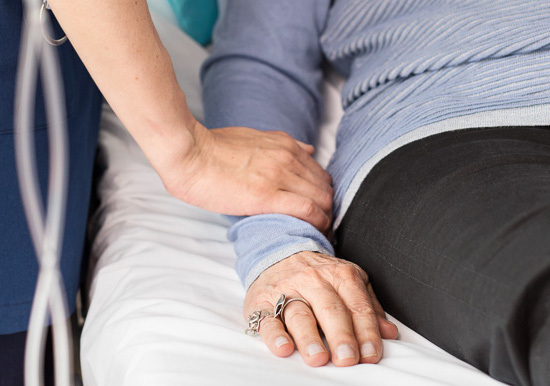Our physiotherapist, Sonja Snygg who has a wide range of expertise and experience in providing rehabilitation for cancer patients with musculoskeletal pain and dysfunction. In addition to the main problem area, we care for the person as a whole and strive to promote the patient’s ability to manage in everyday life and at work. The goals and practical aspects of physiotherapy are agreed together with the patient. The length of a treatment course may vary from a single guidance appointment to a treatment course including several treatment sessions.
At Docrates Health and Recovery Services, the ways in which physiotherapy is given depends on the stage of the patient’s condition:
Cancer patients, no disease progression observed
Oncological treatments are always tough on the patient. Pain increases inflammation, thus slowing down tissue recovery. The consequent swelling further increases pain. We pay particular attention to pain management and also support patients in finding ways to promote their own recovery.
In the acute stage, rehabilitation focuses particularly on wound care, scar formation, pain management, providing information for the patient and the patient’s family, maintaining mobility, mobilising any implant/graft and preventing any swelling. In the subacute stage, it is important to ensure sufficient exercise, good sleep quality, good function in the operated area and adequate breathing. An individually planned physical exercise programme is also started.
After recurrence or disease progression
If the cancer recurs or progresses, exercise instructions, exercises performed in an upright position, pain self-management, breathing, manual lymph drainage therapy and relaxation exercises form an essential part of rehabilitation. The problem area is targeted during treatment. At the same time, we look after the person’s overall well-being and strive to strengthen healthy cells.
Good physiotherapy during end-of-life care
In end-of-life care, particular attention is given to keeping the person active and maintaining an upright position as long as possible. Several ways are used to keep the person comfortable. These may include manual lymph drainage therapy, pain management (TNS, acupuncture), bottle-blowing, warm wheat bags, relaxation exercises, weighted blankets, physiotherapy and postural therapy. The patient’s body perception may be disturbed, and for this reason it is important to provide guidance for family members and hospice staff.







